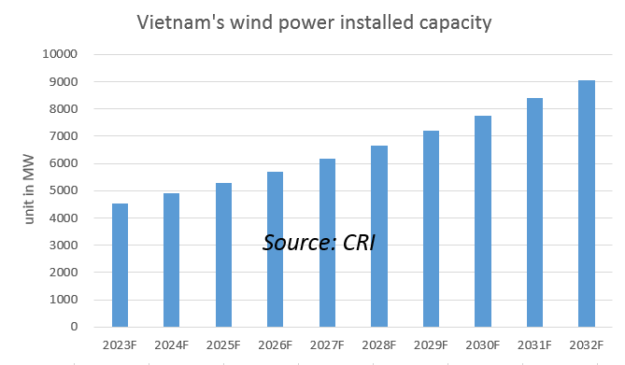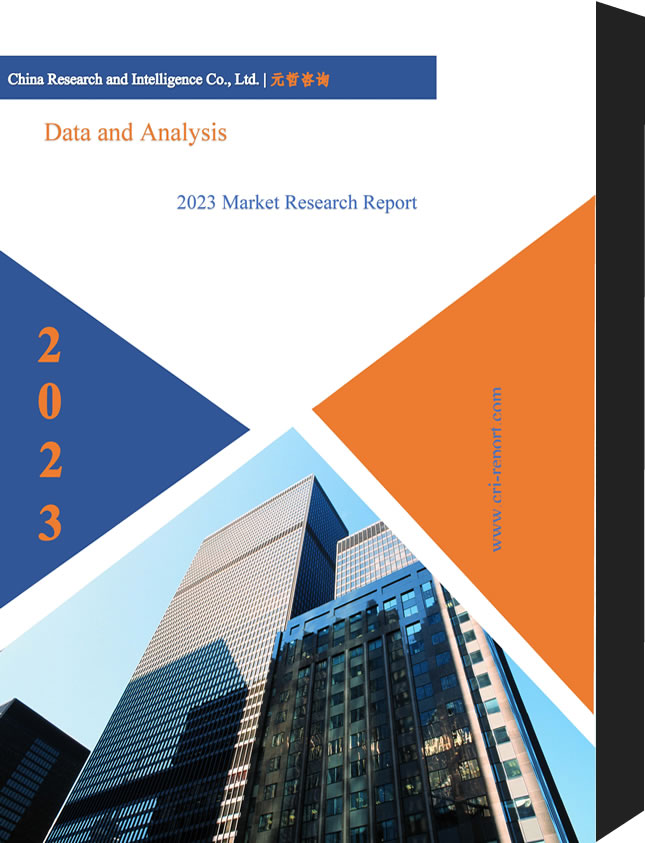Description
Southeast Asia

Industry Overview
With the economic development in Southeast Asia, the demand for electricity is also gradually growing. In 2021, ASEAN Energy Center technical officials pointed out that 10 Southeast Asian countries are expected to experience a power shortage of 79GW to 1143GW in 2025-2060. Therefore, in order to ensure the balance of power supply and demand, Southeast Asian countries need to develop renewable energy, of which wind power has huge room for development.
The total technically exploitable amount of wind power in Southeast Asia exceeds 1,100GW, of which the technically exploitable amount in the 5-6m/s wind speed range exceeds 800GW, mainly distributed in Thailand, Vietnam, Myanmar, Indonesia and other countries. According to CRI’s analysis, the technical development capacity of wind speed above 7m/s in Southeast Asia is mainly distributed in the Philippines and Vietnam.
Accompanying the huge wind energy development potential is the extremely low wind power development capacity of Southeast Asian countries, as of 2019, the total wind power development capacity of 10 Southeast Asian countries is only 2,344MW, accounting for 0.3% of the total installed wind power capacity worldwide. Laos, Myanmar, Cambodia and other countries with some potential for low wind speed wind power development have not yet or just started to develop wind power.
Southeast Asia in this report includes 10 countries: Singapore, Thailand, Philippines, Malaysia, Indonesia, Vietnam, Myanmar, Brunei, Laos and Cambodia. With a total population of over 600 million by the end of 2021, Southeast Asia has an overall economic growth rate higher than the global average and is one of the key drivers of future global economic growth.
According to CRI’s analysis, the economic levels of the 10 Southeast Asian countries vary greatly, with Singapore being the only developed country with a per capita GDP of about US$73,000 in 2021. While Myanmar and Cambodia will have a GDP per capita of less than US$2,000 in 2021. The population and minimum wage levels of each country also vary greatly. Brunei, which has the smallest population, will have a total population of less than 500,000 people in 2021, while Indonesia, which has the largest population, will have a population of about 275 million people in 2021.
Under the influence of tight energy supply, energy conservation and emission reduction environment, several countries in Southeast Asia have formulated renewable energy-related development goals and policies to promote wind power development. Taking Vietnam as an example, Vietnam is expected to achieve 60GW of new installed capacity in 2045 and introduced relevant onshore and offshore wind power feed-in tariff policies in 2018, which has promoted the development of wind power projects in Vietnam.
CRI expects the wind power industry in Southeast Asia to maintain growth from 2023-2032.
Topics covered:
- Southeast Asia Wind Power Industry Status and Major Sources in 2018-2022
- What is the Impact of COVID-19 on Southeast Asia Wind Power Industry?
- Which Companies are the Major Players in Southeast Asia Wind Power Industry Market and What are their Competitive Benchmarks?
- Key Drivers and Market Opportunities in Southeast Asia Wind Power Industry
- What are the Key Drivers, Challenges, and Opportunities for Southeast Asia Wind Power Industry during 2023-2032?
- What is the Expected Revenue of Southeast Asia Wind Power Industry during 2023-2032?
- What are the Strategies Adopted by the Key Players in the Market to Increase Their Market Share in the Industry?
- What are the Competitive Advantages of the Major Players in Southeast Asia Wind Power Industry Market?
- Which Segment of Southeast Asia Wind Power Industry is Expected to Dominate the Market in 2032?
- What are the Major Adverse Factors Facing Southeast Asia Wind Power Industry?
Table of Contents
1 Singapore Wind Power Industry Analysis
1.1 Singapore’s Wind Power Industry Development Environment
1.1.1 Geography
1.1.2 Population
1.1.3 Economy
1.1.4 Minimum Wage in Singapore
1.2 Singapore Wind Power Industry Operation 2018-2022
1.2.1 Supply
1.2.2 Demand
1.3 Analysis of Major Wind Power Companies in Singapore
2 Analysis of Thailand’s Wind Power Industry
2.1 Development Environment of Thailand’s Wind Power Industry
2.1.1 Geography
2.1.2 Population
2.1.3 Economy
2.1.4 Minimum Wage in Thailand
2.2 Thailand Wind Power Industry Operation 2018-2022
2.2.1 Supply
2.2.2 Demand
2.3 Major Wind Power Companies in Thailand
3 Analysis of the Wind Power Industry in the Philippines
3.1 Philippine Wind Power Industry Development Environment
3.1.1 Geography
3.1.2 Population
3.1.3 Economy
3.1.4 Minimum Wage in the Philippines
3.2 Philippine Wind Power Industry Operation 2018-2022
3.2.1 Supply
3.2.2 Demand
3.3 Major Wind Power Companies in the Philippines
4 Malaysia Wind Power Industry Analysis
4.1 Malaysia Wind Power Industry Development Environment
4.1.1 Geography
4.1.2 Population
4.1.3 Economy
4.1.4 Minimum Wage in Malaysia
4.2 Malaysia Wind Power Industry Operation 2018-2022
4.2.1 Supply
4.2.2 Demand
4.3 Major Wind Power Companies in Malaysia
5 Indonesia Wind Power Industry Analysis
5.1 Indonesia Wind Power Industry Development Environment
5.1.1 Geography
5.1.2 Population
5.1.3 Economy
5.1.4 Minimum Wage in Indonesia
5.2 Indonesia Wind Power Industry Operation 2018-2022
5.2.1 Supply
5.2.2 Demand
5.3 Major Wind Power Companies in Indonesia
6 Vietnam Wind Power Industry Analysis
6.1 Vietnam Wind Power Industry Development Environment
6.1.1 Geography
6.1.2 Population
6.1.3 Economy
6.1.4 Minimum Wage in Vietnam
6.2 Vietnam Wind Power Industry Operation 2018-2022
6.2.1 Supply
6.2.2 Demand
6.3 Major Wind Power Enterprises in Vietnam
7 Myanmar Wind Power Industry Analysis
7.1 Development Environment of Myanmar Wind Power Industry
7.1.1 Geography
7.1.2 Population
7.1.3 Economy
7.1.4 Myanmar Minimum Wage
7.2 Myanmar Wind Power Industry Operation Status 2018-2022
7.2.1 Supply
7.2.2 Demand
7.3 Major Wind Power Companies in Myanmar
8 Brunei Wind Power Industry Analysis
8.1 Brunei Wind Power Industry Development Environment
8.1.1 Geography
8.1.2 Population
8.1.3 Economy
8.1.4 Brunei Minimum Wage
8.2 Brunei Wind Power Industry Operation Status 2018-2022
8.2.1 Supply
8.2.2 Demand
8.3 Major Wind Power Companies in Brunei
9 Analysis of the Wind Power Industry in Laos
9.1 Laos Wind Power Industry Development Environment
9.1.1 Geography
9.1.2 Population
9.1.3 Economy
9.1.4 Minimum Wage in Laos
9.2 Operation of the Wind Power Industry in Laos 2018-2022
9.2.1 Supply
9.2.2 Demand
9.3 Major Wind Power Companies in Laos
10 Cambodia Wind Power Industry Analysis
10.1 Development Environment of Cambodia’s Wind Power Industry
10.1.1 Geography
10.1.2 Population
10.1.3 Economy
10.1.4 Minimum Wage in Cambodia
10.2 Cambodia Wind Power Industry Operation Status 2018-2022
10.2.1 Supply
10.2.2 Demand
10.3 Major Wind Power Companies in Cambodia
11 Southeast Asia Wind Power Industry Outlook 2023-2032
11.1 Southeast Asia Wind Power Industry Development Influencing Factors Analysis
11.1.1 Favorable Factors
11.1.2 Unfavorable Factors
11.2 Southeast Asia Wind Power Industry Supply Forecast 2023-2032
11.3 Southeast Asia Wind Power Industry Manufacturing Market Demand Forecast 2023-2032
11.4 Impact of COVID -19 Epidemic on Wind Power Industry



Reviews
There are no reviews yet.